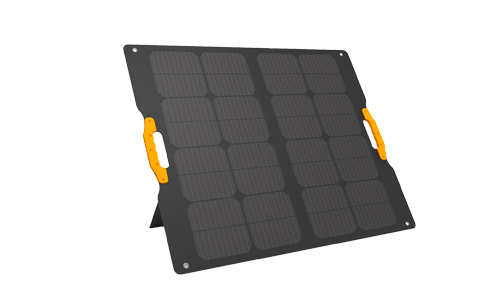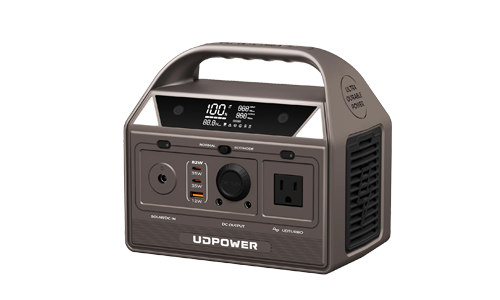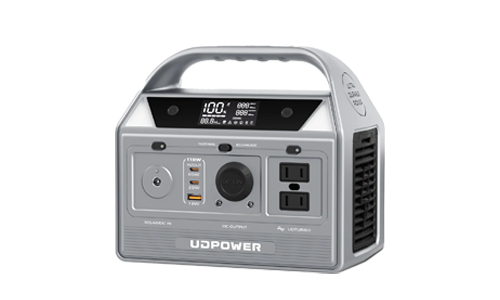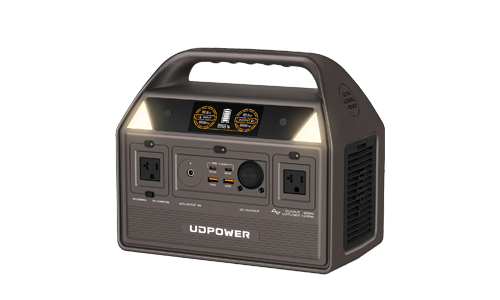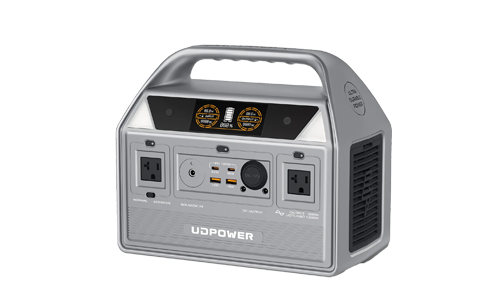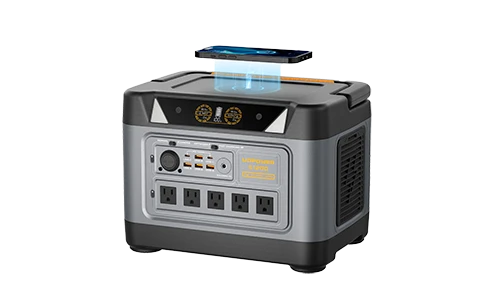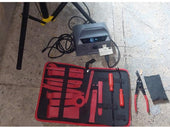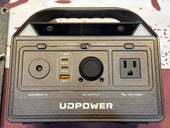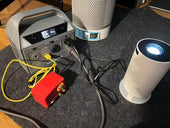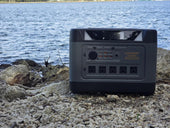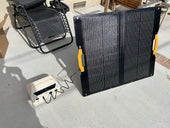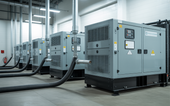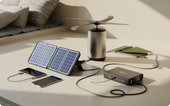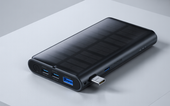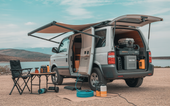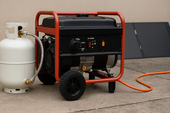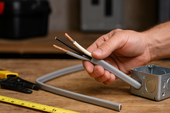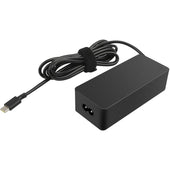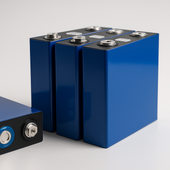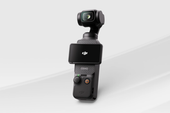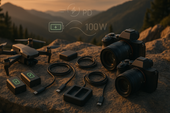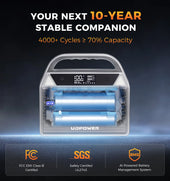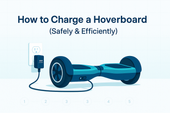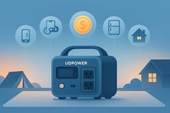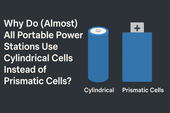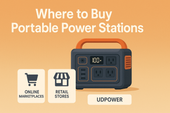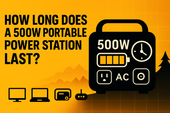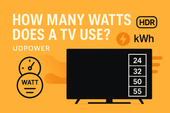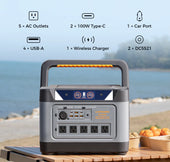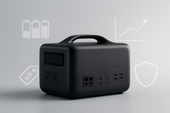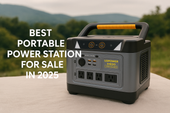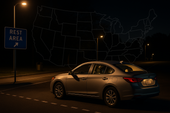Can You Charge a Portable Power Station with a Solar Panel?
ZacharyWilliamTable of Contents
- 1. Yes—You Absolutely Can
- 2. How Does It Work?
- 3. What You Need
- 4. Charging Time
- 5. Best Solar Panels
- 6. Tips for Efficiency
- 7. Real-World Charging Table
- 8. FAQs
- 9. Final Thoughts
1. Yes—You Absolutely Can
Yes, you can charge a portable power station using a solar panel, and in many situations, it’s the most logical and environmentally responsible way to do so. With no need for fuel, noise, or grid access, solar panels are ideal for remote travel, outdoor work, and emergency backup power.
Solar charging is especially popular among campers, preppers, and RV travelers. Once properly set up, your system can generate power every sunny day without ongoing cost or effort.

2. How Does It Work?
Solar panels convert sunlight into electricity using photovoltaic cells. This electricity, in the form of direct current (DC), is then sent to the input port of your power station. Some stations have built-in MPPT (Maximum Power Point Tracking) controllers that optimize the input based on lighting conditions.
Typical setup:
- Solar Panel → Charge Controller (built-in or external) → Power Station Input Port
The solar controller ensures that voltage and current are within safe and optimal limits for charging the battery.
3. What You Need
Setting up a solar charging system requires matching the right components. Here's a breakdown:
- Solar-compatible power station: Check your device manual for acceptable voltage (e.g., 12–30V) and amperage ratings.
- Solar panel: Portable (foldable) or fixed rigid panels, usually 60W to 300W. Make sure wattage and voltage align with your power station's input specs.
- Connector cable: Common types include DC5521, XT60, Anderson PowerPole, 8mm barrel plug, or proprietary connectors. Use official adapters when possible to avoid damage.
- MC4 to DC adapter: Necessary if your panel uses standard MC4 connectors and your power station doesn’t.
- Panel stand or adjustable mount: Helps angle your panel for maximum sun exposure, improving efficiency by 20–30%.
Pro Tip: Label your cables and store them in a waterproof pouch with your power gear to keep your setup organized and protected.
4. How Long Does Solar Charging Take?
Charging time depends on the battery size (Wh), panel wattage (W), weather, and efficiency. Below is a general estimate under ideal sunlight conditions:
| Capacity (Wh) | Panel (W) | Estimated Time |
|---|---|---|
| 300 | 100 | 3.5–5 hrs |
| 500 | 100 | 6–8 hrs |
| 1000 | 200 | 5–7 hrs |
| 1200 | 200 | 6–9 hrs |
| 1500 | 300 | 6–8 hrs |
Assumes ~5 peak sun hours/day and optimal angle. Real-world results may vary.
5. Best Solar Panels
Choosing the right solar panel can significantly impact your experience. Consider the following:
Foldable Panels
- Lightweight and easy to pack
- Quick deployment, ideal for mobility
- Built-in charge controllers or adapters common
- Less durable than rigid panels, but great for temporary setups
Rigid Panels
- Excellent for permanent or semi-permanent installations (RVs, sheds)
- Higher output in long-term use due to better heat dissipation
- Require mounting hardware and protection from transport damage
Also consider panel efficiency, typically 17%–23% for monocrystalline panels. Higher efficiency means smaller panel size for the same output, ideal for tight spaces.
6. Tips for Efficiency
Maximize every watt of sunlight with these techniques:
- Use an MPPT controller: It adjusts to light changes and extracts more energy than older PWM designs, especially in partial shade or mornings/evenings.
- Keep panels clean: Dust, pollen, bird droppings, and smog can reduce output by up to 25%. Clean with water and soft cloth regularly.
- Minimize cable losses: Long, thin cables lose voltage. Use short, thick (lower AWG) cables whenever possible.
- Track the sun: Adjust your panel angle through the day or use a tilt stand for optimal energy capture, especially in winter when the sun is lower.
- Avoid partial shading: Even if just one part of a panel is covered, output can drop drastically depending on the cell configuration.
Bonus Tip: In cooler temperatures, solar panels often perform better than on hot days because excessive heat reduces efficiency.
7. Real-World Charging Table
| Power Station Capacity (Wh) | Solar Panel Wattage (W) | Charging Time (hrs) | Daily Solar Energy (kWh) | Avg Peak Sun Hours | Use Case Summary |
|---|---|---|---|---|---|
| 300 | 100 | 3.5–5 | 0.5 | 5 | Lights, phones, camera charging |
| 500 | 100 | 6–8 | 0.6 | 5 | Laptop and fan for 5–6 hrs |
| 1000 | 200 | 5–7 | 1.2 | 5 | Mini-fridge, lights, phones |
| 1200 | 200 | 6–9 | 1.5 | 5 | LED lights, fans, laptop |
| 1500 | 300 | 6–8 | 2.0 | 5 | CPAP, drones, full device load |
Frequently Asked Questions
Can I use any solar panel?
No, not every solar panel is compatible. It must match the voltage range and connector type supported by your power station. Using the wrong panel may result in poor performance or permanent damage. Always check your device’s input specs before connecting a panel.
Can I charge and use the power station at the same time?
Yes, most power stations allow pass-through charging, meaning you can power devices while recharging the station. However, doing so may slightly slow down charging or increase heat. Always confirm with your model’s manual.
Will it work through a window?
Not effectively. Glass significantly reduces the intensity and spectrum of light needed for solar charging. It's best to place panels outdoors in direct sunlight for optimal results.
Can I use multiple panels together?
Yes, you can combine panels in parallel to increase current while keeping voltage safe. Ensure your power station supports the combined input. Use proper cables and avoid exceeding the voltage limit.
What is MPPT?
MPPT stands for Maximum Power Point Tracking. It’s an intelligent charging controller that adjusts voltage and current to maximize the energy captured from solar panels—especially helpful during changing light conditions like mornings and cloudy skies.
Do I need a solar controller?
If your power station already has a built-in charge controller (MPPT or PWM), you don’t need a separate one. For DIY battery setups, a controller is essential for regulating input and protecting your battery.
Can I use it at night?
No. Solar panels only generate power in the presence of sunlight. You can still use your power station at night, but it must be charged beforehand using solar or another input like AC or car charger.
How much power do I need for a CPAP?
Around 300Wh per night on average, depending on model and whether you're using a heated humidifier. For 8-hour usage, a power station with at least 500Wh is recommended to provide a buffer.
What happens if I exceed voltage input?
Exceeding your power station’s voltage input can permanently damage internal components. Always verify that your panel voltage and combined array are within the safe range.
Does heat affect performance?
Yes. High temperatures reduce solar panel efficiency due to increased electrical resistance. For best performance, elevate your panels for airflow and avoid placing them directly on hot surfaces.
9. Final Thoughts
Charging your portable power station with a solar panel is not just possible — it’s practical, sustainable, and empowering. Whether you're off-grid, camping, or preparing for emergencies, solar gives you control over your power supply.
For the best performance, choose a panel that matches your power station's input, use MPPT, and position it wisely under the sun. Brands like UDPOWER offer solar-compatible systems ready for every adventure.
